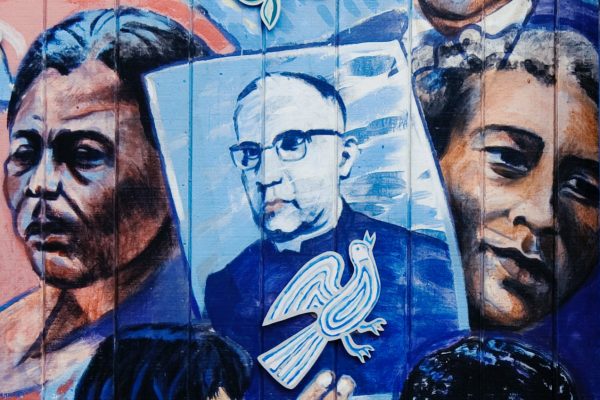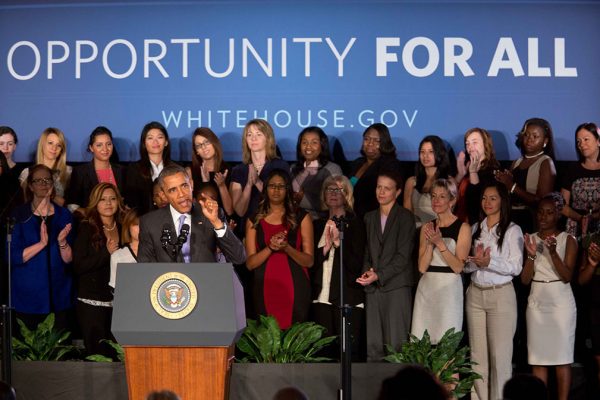This forum appears in print in Reclaiming Freedom.
Throughout the world the word “freedom” is strongly associated with the politics of the left. It brings to mind the great anticolonial struggles of the twentieth century, revolutionary battles against feudalism and aristocracy, movements for women’s and LGBTQ+ liberation, as well as labor’s fight to organize and to overcome workplace misery and economic oppression.
These associations are certainly present in the United States too. Many conceive of the civil rights movement as a pivotal part of a long Black freedom struggle, for example. But a curious thing has happened within American culture. The language of freedom has been claimed almost entirely by the political right, from the absurd (the renaming of French fries as “freedom fries” during the Iraq War) to the dangerous (reactionary House Republicans organize as the “Freedom Caucus”). Today, when many Americans, across the political spectrum, think of freedom, they connect it to extreme individualism, market fundamentalism, bellicosity, and deep suspicion of social programs and government provision. Even worse, the right’s capture of freedom has linked the word to resurgent white nationalism, in which proponents routinely present freedom as under attack from racial outsiders at the border or in the cities—and as requiring militarized violence to keep threats at bay.
One response to this development is to treat it as a matter of Democratic Party messaging. If liberal and left politicians better communicate their ideas, one might think, the language of freedom might be reclaimed. But the U.S. right’s distinctive appropriation of freedom talk has deeper roots than political rhetoric. It is tied to persistent and structural features of this society—features made evident by placing the U.S. domestic context in a global perspective.
Specifically, the particular role that U.S. imperial power has played in collective life—both in the practices of settler conquest and in the terms of today’s global primacy—has repeatedly emboldened exclusionary and highly individualistic versions of domestic freedom. This underappreciated context has shaped cultural environments in which it is almost second nature to link freedom to accounts of self-assertive and unencumbered individuals (coded as “white”).
But the correct response is not to abandon narratives of liberty to the extremism of today’s right, especially given the power of freedom as a political language both in the United States and abroad. Rather, we need a sustained political effort that would make left emancipatory accounts as culturally resonant and organically present within American communities as the ones they contest. And critically, such a project is not chiefly about communication strategy or political messaging. It is a matter of institution building, reshaping the everyday worlds people inhabit—their workplaces, neighborhoods, and schools—in ways that would naturally tie experiences of freedom to democratic values of inclusive solidarity, mutual respect, and common concern. U.S. history may have corroded notions of freedom, but that same history also indicates the conditions under which emancipatory language can be genuinely liberating.
Anglo-European settlers carried to North America a vision of liberty that in many ways remains resonant today. In particular, they argued that to be free entailed more than simply not having your immediate desires thwarted by others, or being subject to someone else’s arbitrary whims. It required actually experiencing independence and control over the basic conditions of one’s life.
In the economic domain, this meant both directing the terms of one’s own work and enjoying security from worries regarding financial ruin or dependence. In the political domain, free citizenship carried with it the experience of participating meaningfully in the governance of society. Above all, to be free was to enjoy a robust experience of self-rule—an experience that combined a mastery over one’s own life and a central role in shaping the direction of collective arrangements and institutions.
There are two ways this self-rule can be provided. First, a society can seek to elevate democracy to a universal and governing ideal across the institutional landscape of collective life. Members can appreciate the extent to which the profound connectedness of modern conditions means that no one can be free on their own. In the sphere of labor, independence requires the embrace of interdependence, in which all those that do the work—regardless of their wealth or status—enjoy shared control over the decisions that shape the workplace. Such an account does more than join freedom and inclusion together: it treats the struggle for a free society as only achievable through an ethical commitment to solidarity.
A second path, however, understands freedom as zero-sum and the world as marked by scarce resources. Under such conditions, my pursuit of material prosperity and my fulfilment of personal wants necessarily competes with that of others. For that reason, how I would like institutions to be run may well diverge from those around me. And if this is the case, then only those I view as similar to myself should have the power to make relevant decisions—or barring that, I should be exempt from collective strictures and common responsibilities.
Both paths have real roots in the United States. But the zero-sum account, more often than not, has won out, aided by the long-term nature of American expansionism. Even worse, empire framed these zero-sum competitions in explicitly racial terms. Land, for the early American settlers, was an essential precondition of economic independence and broader self-rule: in agricultural society, to own land was to be free. The great bounty of North America was a seemingly inexhaustible land base for economic prosperity. But in order for it to be used, it first had to be taken. Indigenous conquest and Native expropriation, then, became the basic engine of liberty.
Settlers’ legal and political institutions were meant to do two things simultaneously. First, they were supposed to provide insiders with a robust experience of freedom. And second, to support this overarching project, these institutions were designed to extract much-needed land and labor from Native and then from other excluded groups, particularly enslaved Black people and their descendants. Thus, for most of American history, the dominant account of freedom was organized around two distinct and rigid views of governance—one for insiders and one for outsiders. Insiders enjoyed the benefits of political participation, the rule of law, and market prerogatives. Outsiders could face near limitless discretion and violence, whether from the state or from employers, landowners, and business.
These conditions linked freedom and domination together in racist and destructive ways. But critically, this settler story of freedom proved resonant because its beneficiaries enjoyed real material benefits.
Thomas Piketty notes in Capital in the Twenty-First Century (2014) that throughout the 1800s—indeed even during the Gilded Age—wealth inequality in the United States was “markedly lower than in Europe.” He does not provide a proper explanation for why, but the answer is fairly evident. Across the century, the project of expansion provided white settlers with easy access to property. It cut against oligarchic tendencies within society, and facilitated a prosperous and small-scale brand of white capitalism. Settler society had its persistent class inequalities. But empire smoothed them over, making the experience of independence and self-mastery it promised genuine for countless white laborers.
The imperial backdrop fed a very specific and individualistic relationship to liberty. One did not necessarily need to embrace interdependence and collective solidarity to enjoy self-rule. If faced with land forfeiture or burdensome taxes, white Americans in theory (and often in practice) could simply move farther west and expand the edge of settlement. In effect, the idea that freedom could be entirely in one’s own hands did not seem far-fetched. Government action to regulate settler society, then—whether enforcing debts or even seeking to contain, however marginally, white theft or violence toward Indigenous and Black people—was an unwanted intrusion.
Today we misunderstand this relationship to government as one that was antistatist or libertarian. Settler freedom far from opposed all government practices. Instead, the prevailing approach saw the apparatus of the state as a sword: one wielded by empowered Americans toward outsiders, meant to ensure insiders with unfettered control over private property and the enjoyment of self-rule. It was properly directed at Indigenous, Black, or Mexican people: never to be used against “true” citizens. Indeed, for white settlers, any internal exercise of state authority was nothing less than an attempt to reduce them to the condition of nonwhite outsiders—to treat free Americans as if they were colonial subjects. Generations of settlers thus came to see any constraint on their capacity to exercise power—including over the marginalized—as a dangerous threat to their liberty.
During the twentieth century the United States shifted roles dramatically, moving from a settler expansionist state with local ambitions to a hegemonic global superpower with far wider ones. American power was no longer organized around the idea that it had the right to claim new territory. Now, the narrative was that the United States rightly enjoyed military and economic primacy. Its interests were the world’s interests, and therefore, the country had the right to intervene wherever anyone threatened to undermine the American-led liberal and capitalist global order. And, precisely because American power was exceptional, the United States—unlike other states—could legitimately move in and out of international legal constraints in the name of securing this order.
By the 1960s this vision of American dominance had rejected the explicit racism of the long settler experience. It now presumed that the United States was legally respectful of state sovereignty, regardless of the underlying racial makeup of the foreign nation. But in key ways, the terms of U.S. primacy still fed the same old domestic cultural resonance of freedom: one belligerent, zero-sum, and individualistic.
Abroad, the dynamics of U.S. power reinforced classic settler dismissals of what freedom actually meant for those on the global margins. With European powers decimated in the wake of World War II, the United States shifted from being one among a variety of global players to the dominant economic force in the world. Its currency emerged as the global reserve currency, and through the carrot of development assistance and the stick of military intervention and violent coups, it reconstructed foreign states in its image, opening markets for U.S. goods in the process.
All of this often went hand in hand with an account of racialized threat—just one that had been updated to fit within the new, more universalistic, narratives of nationhood and belonging at play. The new American global order continued to assume that the United States could exercise violence to fulfill its security objectives (read now as the world’s objectives) to contain outside threats. And, as with the past, the threats primarily came from communities presented as less culturally and politically attuned to freedom—especially ones in the postcolonial Asian, African, and Latin American worlds.
In truth, the tension between the United States and decolonizing nations was often over substantive disagreements about what freedom itself entailed. Leaders like Michael Manley in Jamaica and Julius Nyerere in Tanzania conceived of liberation and self-rule as requiring a new system of “worldmaking after empire,” as Adom Getachew has explored, in which all peoples had the genuine ability to shape economic and political terms. For instance, this meant bringing together a global majority around initiatives like the New International Economic Order (NIEO). Such efforts aimed to replace Cold War rivalry, and thus U.S. dominance, with a multipolar and solidaristic regionalism committed to overcoming exploitation and dependencies throughout the global economy. Yet time and again, U.S. officials read alternative frameworks—along with opposition on the ground to American interventions—through its own narrow security lens. Anticolonial understandings of freedom, when in conflict with U.S. objectives, were routinely dismissed as simply stalking-horses for Soviet power or evincing a racialized lack of “maturity.”
At home, these developments promoted white middle-class prosperity, but in ways that reaffirmed the ties between external power and an atomized account of internal liberty. The rents the country was able to extract from the global arena—rents contested by Manley or Nyerere—meant that for many newly middle-class Americans, corporate well-being was equivalent to public well-being. This also meant that, unlike in other parts of the world, key elements of the American social safety net were ultimately left to what individuals could demand from the market. Jobs, pensions, and health insurance were all private entitlements for workers to negotiate from employers, not public goods entrenched through collective action and government provision. In this sense, as in the Jacksonian period of settler expansion, the nature of the mid-twentieth-century boom reinforced the idea that economic independence and material success rested primarily on individual hard work and entrepreneurial ingenuity.
In his wonderful history of labor in the 1970s, Stayin’ Alive (2010), Jefferson Cowie quotes the son of a white steelworker, who recalled the dramatic material improvements and sense of independence and self-mastery his family enjoyed following World War II: “If what we lived through in the 1950s was not liberation . . . then liberation never happens in real human lives.” This experience was real, meaningful, and in its own way worth celebrating. But at the same time, it was also the case that empire had effectively buttressed a cultural experience that one could be free on one’s own.
To this day American empire pushes domestic conversations about freedom down a corrosive path. But that path is not the only one. Indeed, the competing vision of freedom—the inclusive and solidaristic path—has at times gained the upper hand in American life, if only under very specific structural circumstances.
For starters, these ideas have tended to be strongest among those marginalized in settler society. A driving feature of the civil rights movement, for instance, was an exhortation to reconceive what freedom as self-rule meant. For those like Martin Luther King, Jr., the call for civil rights entailed more than simply ending legal discrimination and providing upwardly mobile Black Americans with an equal opportunity to achieve professional status and power. King saw American society as wracked by the “evils of racism, poverty and militarism,” in which freedom for some entailed deep violence and injustice toward others. He argued that the country required a “revolution of values” and “a radical restructuring of the architecture of American society.” This restructuring conceived of society as inherently interdependent: freedom rested on everyone’s equal and effective ability to participate in the central decisions of collective life. Such a view demanded basic democratic changes to both political and economic systems.
King was not alone in these commitments. They circulated widely, from Fannie Lou Hamer’s cofounding of the Mississippi Freedom Democratic Party and organizing of Freedom Summer to register Black voters across the South, to King, A. Philip Randolph, and Bayard Rustin’s “A Freedom Budget for All Americans,” and even to the more recent vision statements of the Movement for Black Lives. It is no coincidence that Black reform movements have often—although not always, it should be noted—emphasized more inclusive and solidaristic accounts of freedom. More often than not, Black communities found themselves at the wrong end of the exclusionary version: the outsiders at the point of the sword. Racial structures in society subjected Black communities to state and private violence, and denied them access to individualized and market-driven benefits. The reality of being a minority in a majority-white society fostered the political need to link Black freedom to the freedom of all.
As for white American society? The most sustained period in which its inclusive and solidaristic accounts of freedom spread were in the early twentieth century in the years leading up to the New Deal—a period where the basic terms of settler life had collapsed. The frontier was closed; a hierarchical and extreme brand of American corporate consolidation had systematically replaced small-scale and more internally egalitarian brands of settler capitalism. More and more white Americans found their desires for independence and self-mastery thwarted by the unfree work of wage labor and tenancy. The political system further fueled this dependence, with a small coterie of corporate elites dominating public decision-making.
With this breakdown came an opening: new cultural and political space to infuse ideas of freedom with a universalistic, democratic ethos. The loss of their old privileges underscored to increasing numbers of working-class white Americans that freedom as self-rule required a sense of shared responsibility as well as common investment in democratic institutions like unions.
The collapse of settler expectations drove a growing willingness to push back against the worst excesses of its racism and exclusion, too. White laborers were more open to seeing themselves as having the same interests as Black, Mexican, and Asian workers: if their material interests were now bound together, then injustices to those communities imperiled white workers’ freedoms as well.
These new realities further cut against that natural association of American power abroad with domestic well-being. In a world where the United States’ global position had become uncertain—there were no new colonies to settle and the United States was not yet hegemonic—empire’s relationship to domestic prosperity was less clear than ever. Some labor and socialist activists, like Eugene Debs or those in the Industrial Workers of the World, could convince supporters that whatever the benefits had been in the past, American imperialism now promoted plutocracy—not democracy—and enriched a wealthy few at the cost of freedom for most laborers.
These views eventually declined in resonance. After both World War II and the Cold War, American empire, and capital, were able to reconsolidate themselves, setting the terms for what counted as “freedom” in the process. This is not to say that they absolutely eliminated the cultural power of more inclusive and solidaristic ideals: indeed, the Black freedom struggle’s great achievements came during the Cold War period. But the overarching structural context placed wind at the back of one path, just as it made promoting the other far more difficult.
Where does this leave us today? Freedom talk may, at present, be most associated with the politics of the right. But its account of freedom is actually less compelling to Americans generally than perhaps at any time since that early twentieth century. At present, there is a wide sense that most Americans experience nothing like freedom as self-rule. They are instead subject to the whims of massive and hierarchical institutions, at work and in politics.
The conservative response is deeply familiar. But the energy it used to carry with it is waning. More than ever, it feels like the right is falling back nostalgically on the same set of worn-out tropes that worked for them in the past. It continues to tie individualistic self-mastery to dismantling state programs and deregulating the economy. But even its own base now sees that corporate interests are not the same as the public interest. The mid-twentieth-century bargain with business, so good at the time at promoting an entrepreneurial, individualistic freedom, ultimately proved self-defeating, leading to much of today’s precarity. As global economic conditions changed in the following decades, American corporations squeezed workers, abroad and then at home, and steadily eviscerated what remained of midcentury job, pension, and health care achievements.
In addition, nativist and white nationalist calls for more violence against perceived outsiders—whether detaining and deporting immigrants or backing police actions against Black and brown communities—appear to be little more than reveling in domination for its own sake. Such reveling has always been a psychic element of settler freedom, of course. But the present-tense embrace of domination is increasingly far afield from its historical twin: a guarantee that that domination would give genuine control to the majority of white Americans over the large structuring terms of their lives. As Robin D. G. Kelley has commented, Trumpism and the politics of the right today are notably “fragile.” It rests on “ideological foundations” premised on the control of others but is now unable to make good on its slogans.
All of this is yet further underscored by the shift in the relationship between U.S. global power and domestic well-being. Today, fewer Americans than ever enjoy actual material benefits from the United States’ dominant position in the world economy. And the projection of American military authority has, in recent years, gone hand in hand with disastrous wars in places like Afghanistan and Iraq. These wars were often framed by officials as centrally about the preservation of freedom at home and its spread abroad (hence “Operation Enduring Freedom”). But just as during the era of decolonization, interventions were routinely experienced by local communities as external impositions in deep violation of meaningful self-rule. And at home, trillions plowed into overseas conflict stood in sharp contrast to decades of disinvestment, a reality made even starker by unfolding health and economic crises.
Seen from the outside, the disconnect between what the United States considers its global security objectives and how many in Asia, Africa, and Latin America understand the ongoing legacy of colonialism remains a persistent tension. This dynamic is at play yet again in the Biden administration’s actions following Hamas’s October 7 atrocities against civilians in Israel. As many across the Global South see it, the United States is backstopping the Israeli government’s devastating and punitive bombing campaign in Gaza, along with intense crackdowns in the West Bank and elsewhere—aiding another catastrophic war, while ignoring underlying Palestinian grievances and popular desires for freedom and equal dignity.
As difficult as these times are, this unsettled reality does again open, however partially, space for more inclusive and solidaristic ideas of freedom. Younger Americans’ growing embrace of the once-forbidden label of “socialism” and the broader political revival of social democratic politics underline the disenchantment both with American-style capitalism and with the political truisms about U.S. power promoted during and after the Cold War.
But this moment differs in crucial ways from those earlier periods of left-wing vibrancy. Activists today operate on a political terrain dramatically altered by neoliberal ascendance and decades of Reaganite cultural and political dominance. These changes have fundamentally eroded both the vitality and everyday presence of the institutions, chief among them unions, that once brought working people into the left. Why is this significant? Because if a left freedom project assumes that self-rule is a continuous exercise in participation and collective power, there are vanishingly few sites in American life—at work or in politics—where these experiences actually exist. We are simply not raised in cultural worlds in which collective agency is a meaningful reality.
The result, unsurprisingly, is that when invoked by left activists, solidaristic and democratic accounts of freedom can often seem theoretical and abstract; they do not connect to the daily features of one’s life. Indeed, it is telling that today, the most potent left invocations of freedom overwhelmingly involve activists within marginalized communities who are referencing actual direct, immediate, and ongoing threats, whether in the context of racial justice protests against policing following George Floyd’s murder, calls for abortion and reproductive rights in the wake of Roe’s overturning, or responses to reactionary attacks on LGBTQ+ identity and safety.
But despite these movement examples, the larger sense that collective self-rule and agency is not something regularly experienced can promote a pessimistic relationship to any language of freedom or emancipation. In fact, today’s environment can leave some left-liberals wondering whether the longstanding and specific American relationship between settler freedom and racial domination is proof that all related narratives should be abandoned. Freedom in the United States as a discursive language, they warn, will inevitably collapse into exclusionary violence and subjugation. At the most extreme, this sensibility can generate a suspicion of the very utility of collective agency and even of political struggle.
But this sentiment must be resisted. It abandons to the right what has been a powerful and global language of social transformation: a language embraced, too, by many of those excluded from the dominant, reactionary narrative of freedom. And it fails to appreciate how in practice, ideas of freedom are always connected to those of subordination. Throughout the world, communities have come to understand the meaning of freedom in relation to the very modes of oppression—like slavery, colonialism, economic exploitation, or patriarchy—that are prevalent on the ground.
Even successful projects of emancipation do not overcome practices of domination once and for all. They generate new legal and political orders that knit together secured liberties with emerging hierarchies. Freedom struggles are thus forever ongoing. They may carry with them transformative, even revolutionary aspirations. But these aspirations are never completely redeemed in history. The American story of freedom and domination, then, is simply one way that knitting together can take concrete form. Rather than suggesting the need to reject such frames and narratives entirely, the complex U.S. experience highlights how we must grapple with our own particular histories and resulting combinations of freedom and subordination.
Doing so yields two main implications. First, it clarifies that the primary battle for the left is less about communications strategy and more about institution building. This means strengthening sites where individuals can enjoy collective agency and so would organically experience freedom as an inclusive and solidaristic practice.
Such efforts start with the political system, whose antidemocratic perversions feed pessimism in the very utility of collective solidarity and action. Expanding and equalizing voting rights—as well as reforming our distorted, state-based, and gerrymandered framework—all stitch together freedom and democracy in ways that cut against ingrained skepticisms.
So too do fundamental changes to the nature of the American workplace. Precisely because most people spend most of their time at work, the workplace is an essential pillar for reconstituting prevalent cultural narratives. Whether through bills like the Protecting the Right to Organize Act or other, more far-reaching endeavors, the legal terrain must be altered to expand the capacity of workers to join unions and strike. These workplace transformations should be properly understood as experiments in the linking of freedom and democracy: they make the institutions people inhabit on a daily basis far more amenable to collective self-rule and promote a continuous exercise in shared decision-making. The success of these efforts would create a fundamentally different ecosystem for political discourse and argument.
And second, the American experience shows us that any domestic vision of freedom rests on global conditions. What is often treated as foreign policy is not a sideshow: it necessarily influences cultural and political orientations in the United States. The nineteenth and twentieth centuries have taught us that we cannot expect an inclusive and solidaristic version of freedom at home if our government pursues projects of expropriation and expansion—whether over Native nations, still-colonized territories like Puerto Rico, or overseas societies.
This underscores the need to focus on reforms that integrate an anti-imperial ethic into how Americans understand their own everyday goals and interests. As with past efforts like the Freedom Budget, one key intersection is security spending. At a time when antiwar activism is cresting again at home and globally, the United States accounts for nearly half of all worldwide defense expenditures, with recent annual defense outlays of upwards of $900 billion. This is a fundamental misallocation of the public treasure, one that bankrolls corporate militarism. It limits the funds available for the broad provision of economic security and independence—not to mention redistributive and reparative policies that commit to Indigenous freedom alongside genuine global well-being and equality.
Immigration is another central space. Whereas those like Trump link the foreign and domestic through racial demonization and a focus on the imperative of the border, the challenge for the left is precisely to invert and repudiate this framing. Immigrant workers provide essential labor sustaining American life, yet enjoy minimal legal and political protections. Transforming immigrant status would therefore go hand in hand with a profound reimagining of how economic and political self-rule can spread in American life. It would entail conceiving of economic independence and opportunity as divorced from the old settler duality between internal freedom and external power.
This approach rejects thinking of immigration as simply a matter that starts at the border, with virtually no attention paid to the particular histories, international economic pressures, and specific U.S. foreign and domestic policy practices that generate migration patterns in the first place. It carries with it an embrace of presumptive admission for all—the framework that throughout the nineteenth century defined the approach for European immigrants alone—and the basic decriminalization of entry. And the joining of labor and immigrant freedom opposes any closed vision of in-group solidarity, pushing both movement constituencies and Americans broadly toward richer accounts of shared class, social concern, and institutional arrangement.
Ultimately, there is no end-run around the hard political work of movement and coalition building. This moment instead requires a return to the essential project of revitalizing the institutions and social bases that would give meaning and power to any genuinely emancipatory narrative. Such a political project may not pay immediate dividends, but it is the foundation for real change. And perhaps most important, it offers a concrete mechanism for combining a language of liberation with practical improvements to people’s daily lives.
We’re interested in what you think. Submit a letter to the editors at letters@bostonreview.net. Boston Review is nonprofit, paywall-free, and reader-funded. To support work like this, please donate here.




















